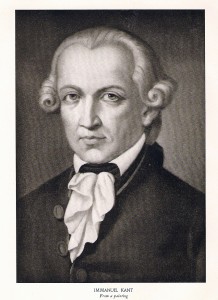I’m not sure these two were really as far apart as all that on the sources of normativity in aesthetics and ethics.
“For Kant the moral order “within” was an awesome mystery; for sociologists the moral order “without” is a technical mystery. From the point of view of sociological theory the moral order consists of the rule governed activities of everyday life. A society’s members encounter and know the moral order as perceivedly normal courses of action-familiar scenes of everyday affairs, the world of daily life known in common with others and with others taken for granted.”
Garfinkel, H. (1967). Studies in ethnomethodology. America. Englewood Cliffs, New Jersey: Prentice-Hall Inc. p.35.
“The propaedeutic for all beautiful art, so far as it is aimed at the highest degree of its perfection, seems to lie not in precepts, but in the culture of the mental powers through those prior forms of knowledge that are called humaniora, presumably because humanity means on the one hand the universal feeling of participation and on the other hand the capacity for being able to communicate one’s inmost self universally, which properties taken together constitute the sociability that is appropriate to humankind, by means of which it distinguishes itself from the limitation of animals.
Kant, I. (2000). Critique of the Power of Judgement. (P. Guyer, Ed.). Cambridge: Cambridge University Press. p.229.

